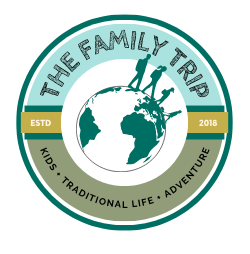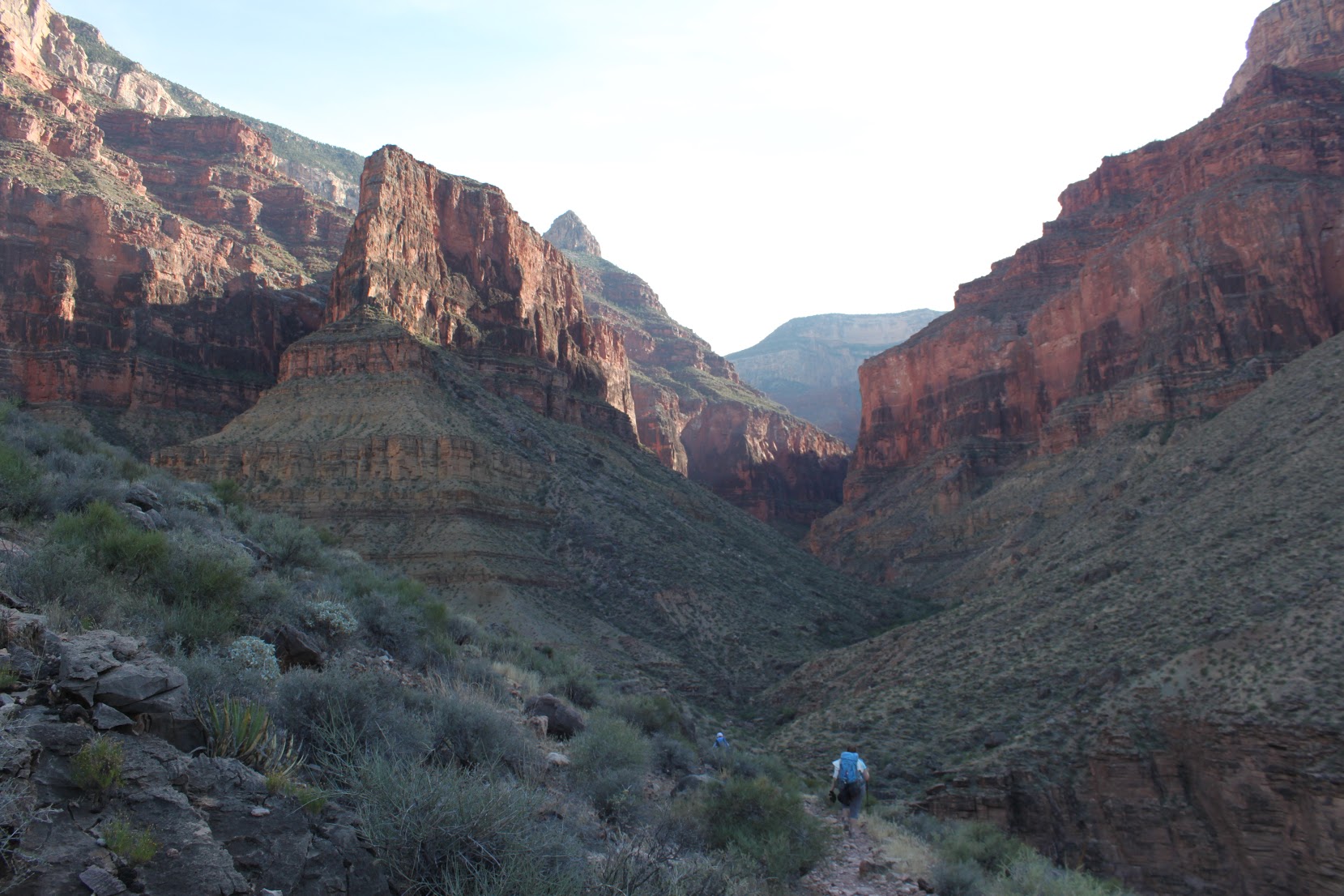
Then, like the plot of a survival movie, my party of backpackers was now stuck in the bottom of the Grand Canyon with a man who had just, we would later learn, suffered a complete patellar tendon rupture. My non-medically-trained translation is that his patellar tendon had separated from his leg, pulling his kneecap up inside his quadriceps. Without his patellar tendon, nothing would keep his hamstring under control. His leg had fits and seizures while my once-military brother screamed in agony.
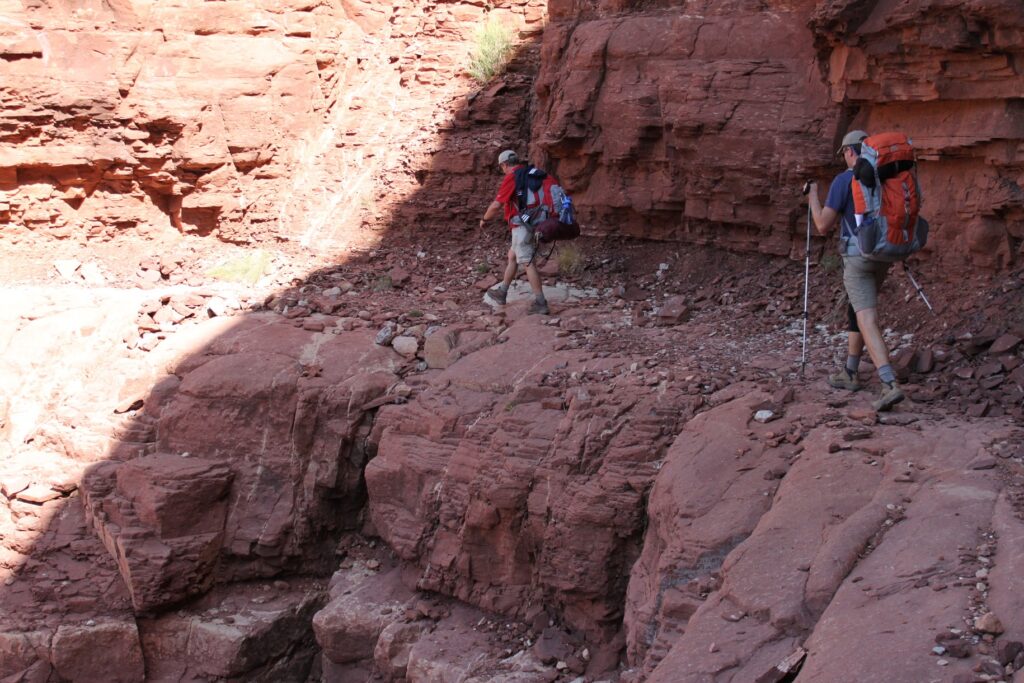
Following naiveté into the belly of the Earth
Out of approximately 40,000 hikers who go down into the Canyon each year, I can’t believe my family and I were the most ill-advised of the lot to make the “bucket list” trek. Our trip didn’t happen on a whim. Years earlier my brother, sister and I developed a (mostly Google-research based) obsession with backpacking.
One summer, while I was between pregnancies, we took our first trip through the Great Smoky Mountains. We were hooked: on the gear, the rugged outdoors, the peace, the challenge, the pain and the stories. We felt we had aced the final exam of life each time we successfully made it back from the wilderness. Looking out our own dingy selves in terrible motel room mirrors off of backcountry roads, we wrote our own hypothetical egotistical eulogies. We wrote ourselves as the most courageous and adventurous people, people worth knowing. At some point we decided we wanted to be those humans down in the Grand Canyon.
In 2013, we acquired a permit to go in. The Grand Canyon Park Service receives far more requests for back country permits (30,000) than they can accommodate. They issue 13,000 permits a year and it is nearly laughable that we humans complete with each other to gain access to one of the harshest environments.
The prosaic part of me, that adores irony and poetry, tries to embrace this as an indicator as to how intertwined we are with our landscape. Everyone wants the final eulogy that scales rocks and stares up at the stars in the middle of nowhere.
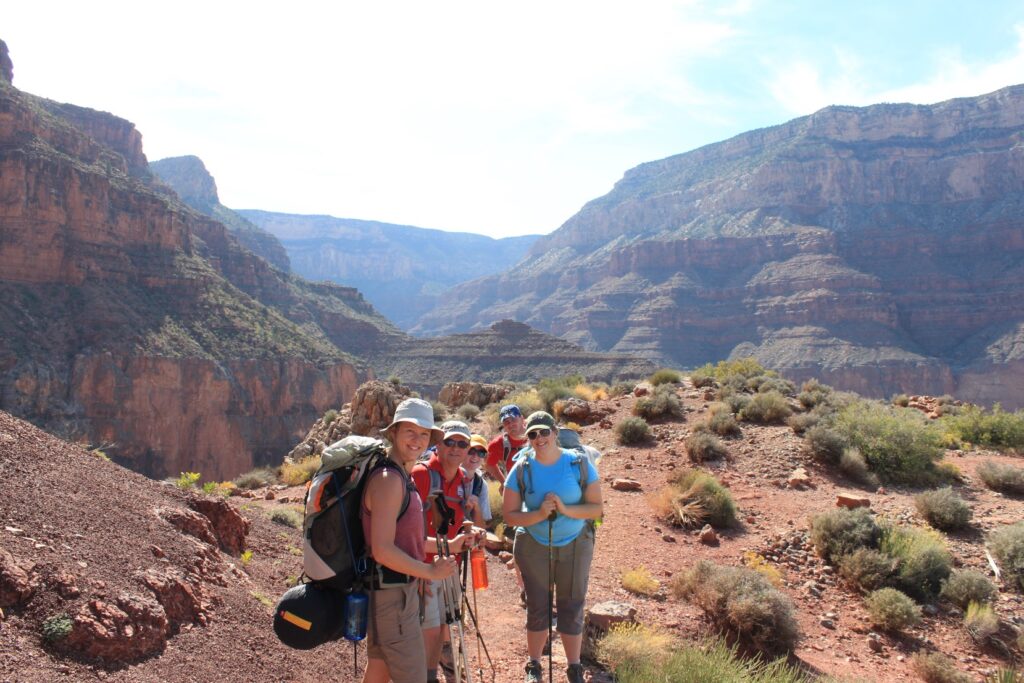
One fact we didn’t share in our furious emailing? Backpacker.com names the Grand Canyon as one of the top six most dangerous National Parks. In 2012 alone it hosted a whopping 342 Search and Rescue (“SAR”) missions and claimed the most deaths in a park, at 21 lives in one year. While most people have nightmares of plummeting off the rim of the Canyon to a rocky death, those stories, which get a lot of shares in our sensationalist and social media driven 24/7 news cycle, are pretty rare. Environmental stress actually commands 25% of all deaths.
My family and I glanced over that fact. But before we even started on our descent, we already knew we weren’t having a textbook trip. To be true, the more I backpack the more I realize there aren’t any “perfect” trips. Backpacking is not for the control freaks who obsess about a daily schedule and buy day planners that allow you to control each hour of your time with your pen.
In the Canyon, we felt the impact of far too much weight: we had actually over packed. It seems we had been oversold by the enthusiastic salesclerks who had never hiked into the Canyon, or who worked on commission
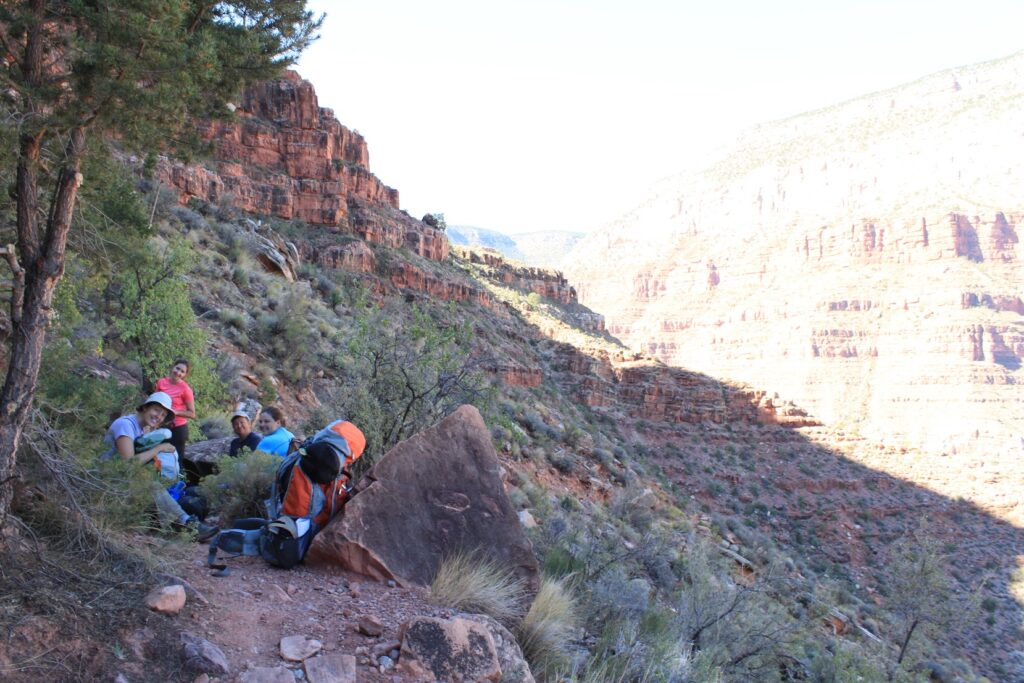
Why Are We Obsessed with Suffering?
The National Park Services tries at every opportunity to discourage people like me. They remind hikers what they will be facing. Their website is blunt: “You will be hiking in a desert climate, where water and protection from the elements make the difference between life and death. Your trip begins at a high elevation (7000-8000 feet) and requires a bone-jarring descent at the beginning of your trip, when your pack is heaviest. You will face a long climb out when you are already tired.” As you prepare to drop into the Canyon, grim signs warn you of what is at stake.
After tripping into 40, I now realize that I should heed these warnings. But in the beautiful terror of my youth, I believed, as all humans do, that anything dire, strange, dangerous and deathly happens to others, and that really stinks for them. But I believed I could do anything I wanted. I wouldn’t die in a bus in the Alaskan wilderness or plunge to my death in the Canyon. Hubris is the only way humans continue to spread across the world.
Plus, youthful hubris that ends in a worst case scenario ends up entertaining our society, even as we believe we are different and apart. Grand Canyon deaths are immensely gripping. Inspired by the book Over the Edge: Death in the Grand Canyon (which has sold well over 250,000 copies), a technology company named esri created a 3D live map with the name “Death in the Grand Canyon.” It is addictive.
Using glaring red hexagonal pins against a digital topographic wonderpiece, visitors to the website can track in gruesome detail 700 deaths in the Grand Canyon. esri’s website states, ”…this map helps tell the fascinating and heartbreaking stories of more than 700 lives lost. The map quickly shows patterns, clusters, and isolated incidents across the national park so we can understand how and where people died. The almost abstract style and strong colors invite further inquiry.”
For a society that tears into movies such as Everest and The Revenant, the Grand Canyon reminds the voyeurs in us that the scales of life and death are tipping every single day in dramatic ways. It is happening to “ordinary” human beings, such as my little brother. Most of those 700 lives esri pins on their map walked in with shiny new hiking boots sold to them by a long-haired college kid in suburbia. The hikers were convinced by their own small view of the frailty of humanity, like mine, that they would end up with just a story and gorgeous photos. Yet my own little brother could have been one of those red hexagons.
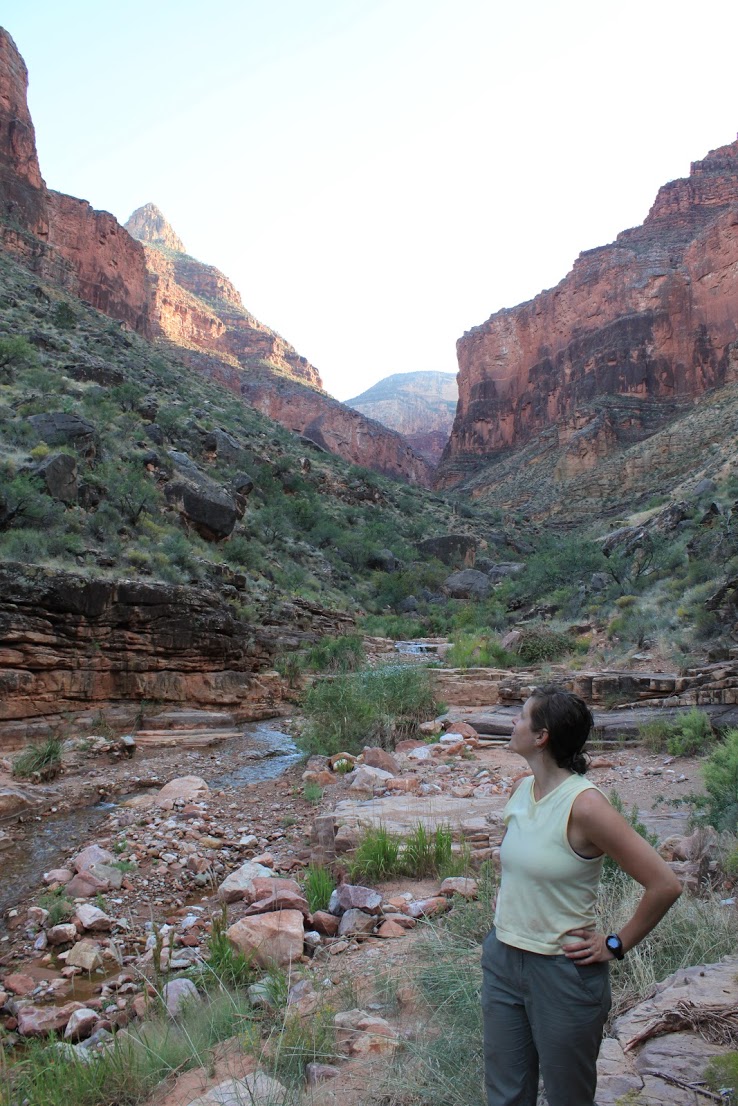
The Journey Down in the Grand Canyon
We felt ready. My dad, brother, sister, sister’s wife, my husband and I met in a grimy hotel room somewhere out where life was hot and dusty, near a town named Tusayana, Arizona (elevation 6,540 feet). We gathered our provisions, ate too much greasy pizza from a place we could only determine called itself “We Cook Pizza,” and chattered about our plans with nervous excitement.
In the morning, we dropped in to the Canyon at Hermits Rest to begin. Our intent was not to get all the way to the Colorado River on that first day. At the end of a grueling day’s long hike, complete with the emotional roller a day of punishing your feet and walking the same brutal downward slope with too much pack weight on entails. We camped at Hermit Creek campsite.
We were 7.8 miles along the trail, down the cathedral stairs, and two miles away from the mighty Colorado River. Our plan was to sleep with the scorpions, beside an outdoor latrine.
But the next day we would dip our toes in the historic Colorado River. Our DNA, our scaly dead blister skin, would forever be part of the epic evolution of mankind’s dominion over the earth. Then, after one more easy night at the campsite, we would wind our way back up.
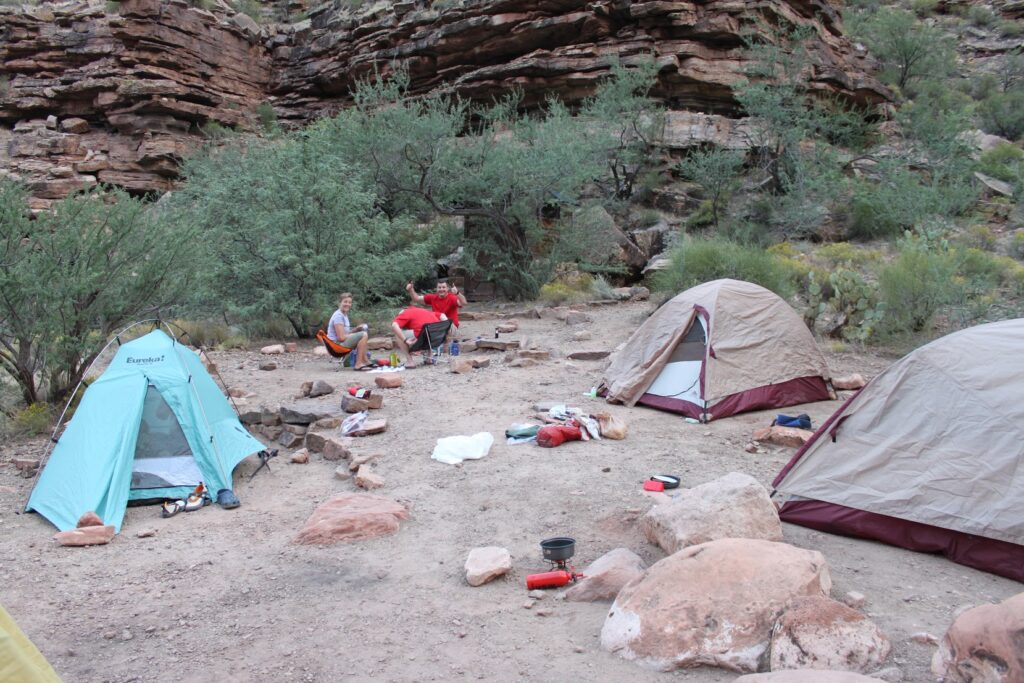
Our group was at peace with ourselves, with each other, and with the Grand Canyon. Stars I didn’t even know existed twinkled at us, the Canyon walls hugged us. The temperature cooled on our caked sweat. We eventually pulled our bandaged and bruised feet in to our tents and slept soundly on beds of rock and dirt.
In the morning our feet were throbbing, our limbs and muscles were bruised in new ways, and we felt weak, despite the power of nature around us. I bound my swollen feet as tight as I could and grit my teeth as my shoes felt like mouse traps on my toes.
We were having a hard time finding the trail we wanted and I gingerly joined my family bushwhacking (such as that is in a desert). The entire area was desolate; those who had shared the campsite with us had packed up and moved on.
My brother, the one with the map in his mind, made a breezy decision to step down the ledge to the bank of Hermit Creek to scout forward. This step was just down the bank and it was nothing. It was one more step out of the millions far more treacherous we had already taken in to the Canyon. We had done the cathedral stairs fourteen hours before, with my brother leading the charge.
But this little ledge, this tiny little step down, pummeled his knee.
Our entire group heard an audible SNAP and he fell, screaming. Groaning and gripping his knee, he rolled his face into the dirt. Silence.
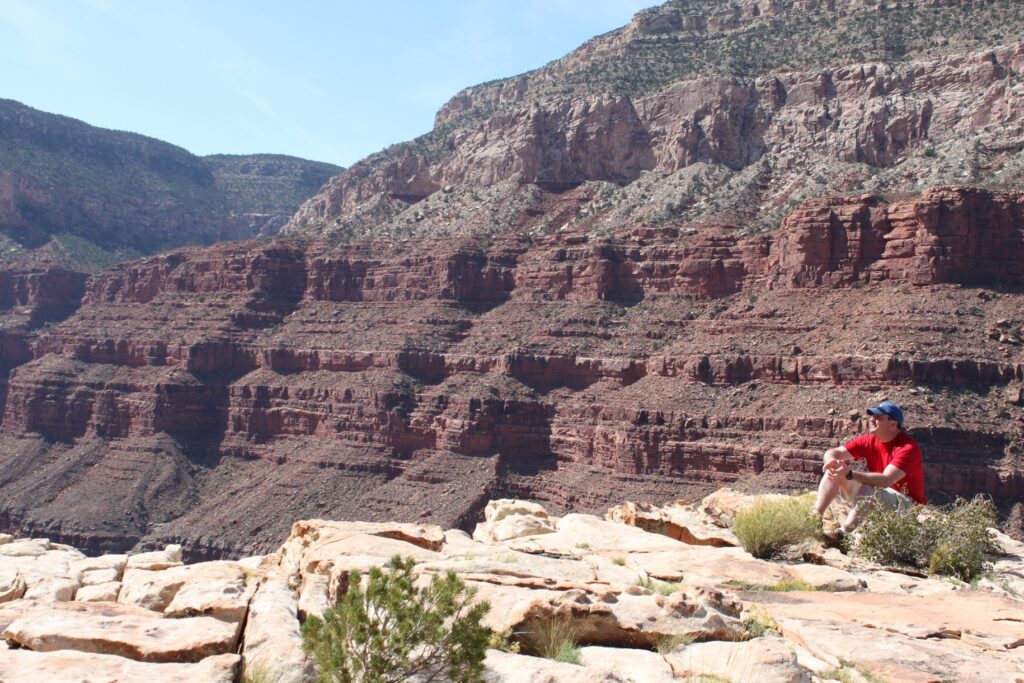
The Painful Silence
My brother stopped everyone’s stressful hither motions, put his hands out and simply said, “Can we just…” His words trailed off but his arms swept out. I powered off my useless phone and felt hopeless.
Eventually, we were able to move my brother. It was a screeching, screaming and painful experience and once he was underneath a rocky awning back at the campsite, it became evident we were not making it to the mighty Colorado. We didn’t even know when we would make it out of the Canyon at all. My brother couldn’t walk.
We splinted my brother’s knee and sat down in the dust and dirt with him, under a rock that once was the center of the earth. Someone pulled a hydration bladder full of bourbon from one of the backpacks. Finally, the fact that we had packmuled ten extra pounds on our backs paid off. The sweet, shiny, unexpected nectar glinted hazily in the sun. My brother took the first swig. We passed the awkward rubbery bag around.
The small amount of amber liquor we shared dulled some of our exhausted, hungry edges. We experienced firsthand the resiliency of the human spirit. Like the explorers before us, we found optimism and hope. We would not be defeated. At first light we would send a quick and agile rescue team to the top and help would be sent.
But then, a small group of hikers moved in to camp and interrupted our intense sitting. They were a small family, as quiet and reserved as we were big, loud and raucous. In a twist that any writer would pay for, we discovered one was a doctor. He gracefully stepped over the rock edges, looked at my brother’s knee and immediately told us what we already knew: this was far more serious than a dislocated kneecap.
This particular family had hired a guide to accompany them, a beautiful, quiet guide who had a satellite phone. The guide cut through the static to the ranger station.
We heard the voice of help, park rangers on the other side of a crackling line. Salvation.
But the rangers didn’t equivocate. They rudely cut through all the buoyant hope bouncing around.
No one would be coming for us.
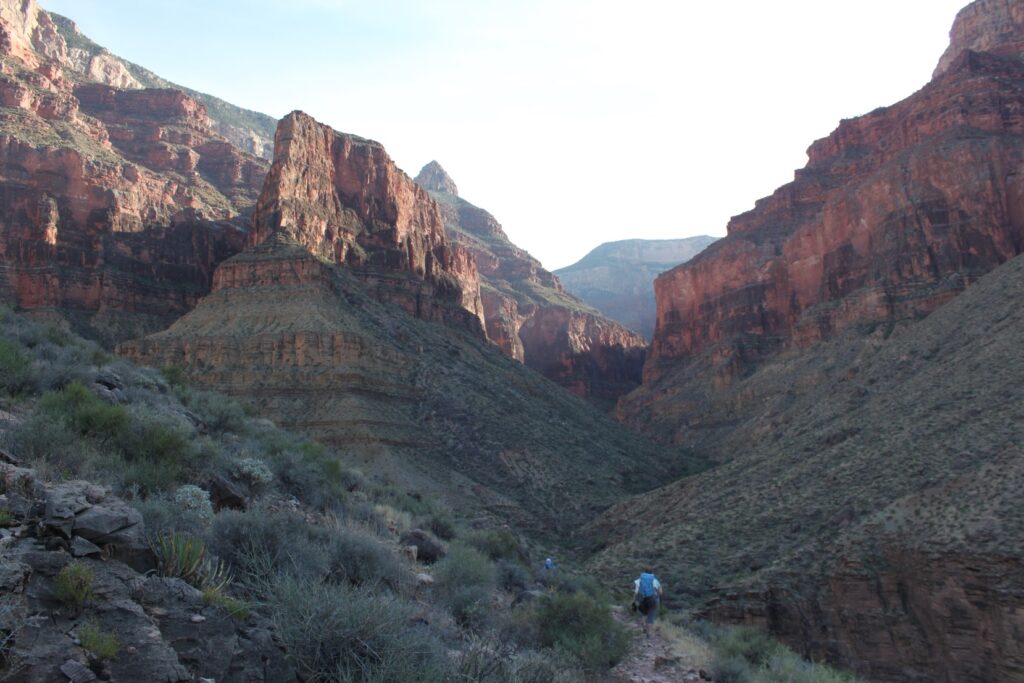
The Consequences of Abuse
Which is where it gets tricky. Are the SAR missions primarily to bail out under-prepared hikers who shouldn’t have had a permit in the first place? Did they not read the NPS website, see the signs, or stumble on the esri map? They should have been better equipped! It’s their own damn fault! Let them deal with the consequences!
Was this my family and I? Were we now to suffer the consequences of the few who had abused the SAR program?
A wide berth of unprepared hikers do drop into the Canyon, expecting help. This muddies the waters for SAR workers and can make exercising judgement on who needs help difficult, if nearly impossible.
In an August 2015 interview, Arizona Daily Sun writer Emery Cowen spoke with director of the park’s Preventive Search and Rescue Program (PSAR), C.J. Malcolm.
“Another persistent statistic sticks out as well. Of the approximately 100,000 hikers the PSAR program makes contact with each year, the staff and volunteers give a “preventive message” — something like “you really shouldn’t be hiking to the river in Tevas” — to 25,000 to 30,000 of them, he said.
“That means 25 to 30 percent of our population is coming out here unprepared and that’s probably being generous,” Malcolm said.
Malcolm is full of stories about hikers who have no idea what they’re getting into.”
In an October 2015 interview with Backpacker Magazine, veteran Grand Canyon rescue ranger bluntly put this into words: “Many people think it should be easy to hike downhill so they are just overwhelmed by the realization that their body is thrashed after the 5,000-foot descent from rim to river,” notes Vandergraff. Instead of simply resting, nursing their blisters, and adjusting their trip itinerary to fit a new reality, many of these shaken hikers immediately call for rescue. But, Vandergraff says, “We are not babysitters.”
I want to be clear: my brother was not in need of a babysitter. He needed immediate medical attention from a freak accident and was stuck in the base of a canyon. He was healthy, fit and active. He was hydrated and full of food (even if it was terrible food).
The fact that SAR workers are frequently called upon to rescue those who could have avoided it, those who treated their mortality with the same flippant attitude I did, meant that their barometer for determining what is actually needed is weak. But, lucky for us, we had a doctor on our side. Whatever he said over that sat phone changed our story; a helicopter was being sent.
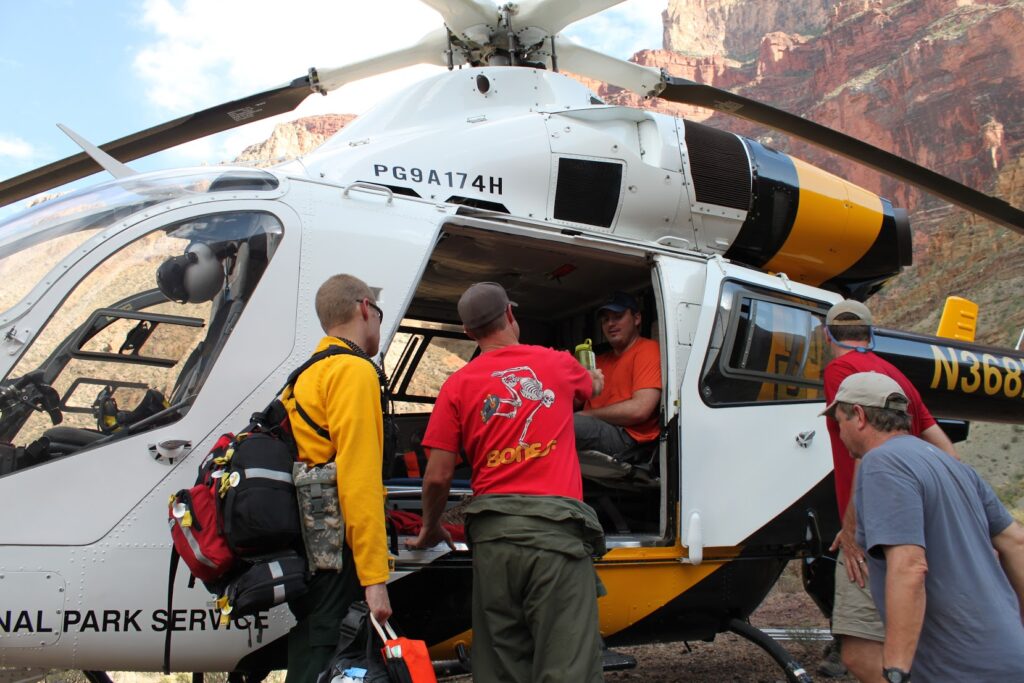
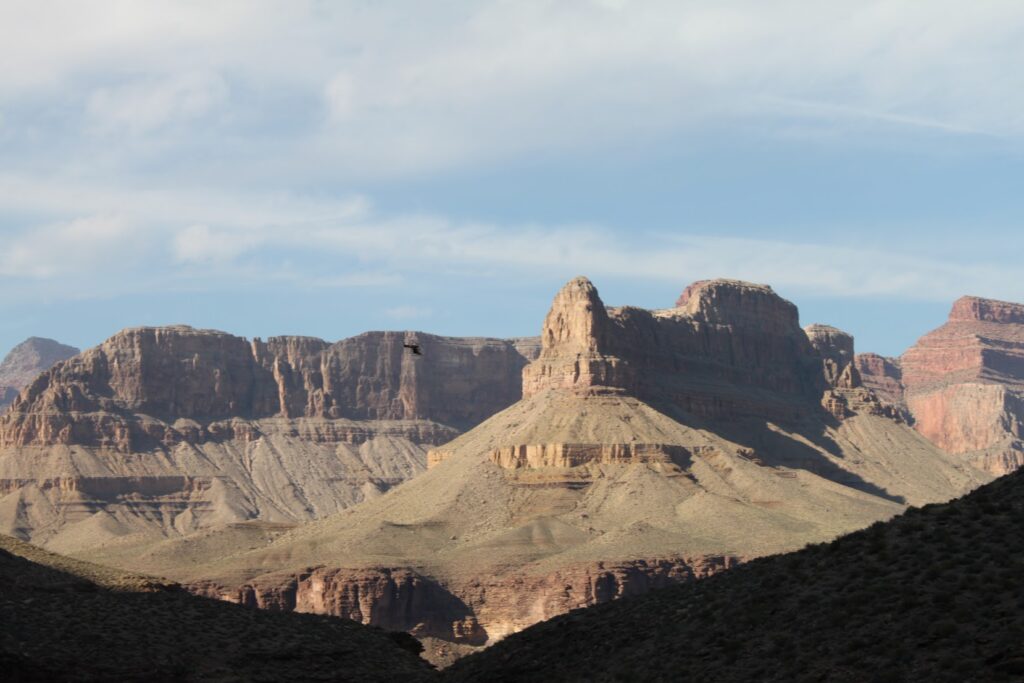
“Sorry we gave you a hard time, man,” one of the rescue agents apologized to my brother. “We get a lot of people who enter the Canyon, unfit and unprepared, get dehydrated, and ask us to use our resources to get them out. We don’t do that.”
He looked down at my brother. “But you,” he went on to add, “dude, you need us.”
My brother was sweating profusely and his eyes were clouding over but he made it to the helicopter and out of the Canyon. Of course, he made it. There wasn’t any other choice. As he heaved himself in to the helicopter we blew around in the downdraft. Bags were thrown, repacked, and terse words followed. No one could accompany him, he could take only his pack out. The helicopter was already at weight capacity. After negotiating, pleading, and questioning, we were told that they would take him to the hospital in Flagstaff as soon as they landed. We could get to him there. Tomorrow.
We watched him, silhouetted in the helicopter’s open door, as he lifted out of the Canyon. The sun was setting as we watched him taken away to safety in the only manmade thing anywhere on the horizon.
The next morning we were up with the sun, our watches telling us it was 5 am. We had a quick, hot hike to the top. Our hike was a stunned one, each of us absorbed in our own thoughts and concerns, appreciating our knees with every step.
In an anticlimactic ending we straggled our way to the car and threw our boots at the pavement, cursing. My sister’s bruised toenail fell off as we peeled our fancy socks from our feet. We crawled in to the air conditioned car and we laughed at our reflections in the tiny mirrors.
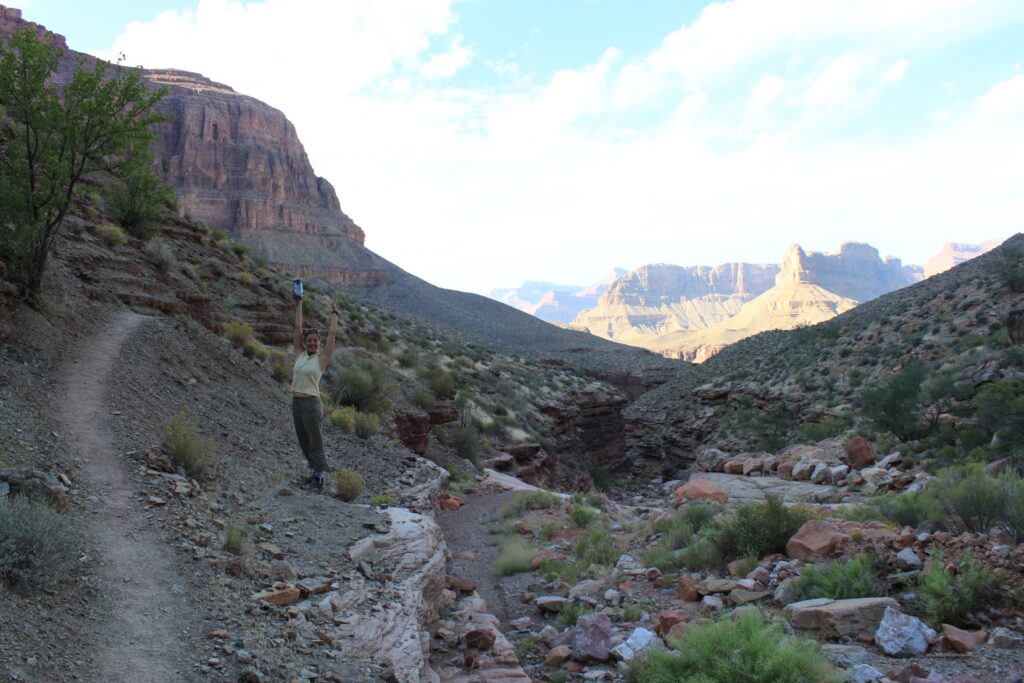
Reckoning with the Grand Canyon
Soon, we ran in to my brother’s room at the hospital, not stopping for the post-backpacking reward of burgers and a cold beer. My brother, high from the drugs, confused as to where he was, laughed when he saw us. “You all look TERRIBLE! Don’t sit on my bed! You guys are filthy!”
We learned that he had been through surgery, alone, to reattach his patellar tendon. The doctor reached up in his leg, retrieved the tendon and kneecap, and, with screws and wires, put his knee back together.
While the Canyon had chewed up my brother’s right knee, he simply calls it an unfortunate accident that sometimes happens. He even goes so far as to call that helicopter ride out as one of the most amazing experiences of his life.
In one of our few post-trip conversations about the trip, when everything was raw and emotions were high, with guilt and unannounced regret, my brother stopped our weeping and said, practically, “Look, it is crazy to go on a trip like this and not be prepared for the fact that something like this COULD happen. The Grand Canyon is extreme and dangerous. It isn’t undoable, it isn’t irrational. But there has to be a part of you that is always hyper-aware that something could go wrong.”
He’s been backpacking since, even on his own. But my mother and father have laden him with sat phones and geolocating devices. We are wiser, smarter and cautious. We are not obsessed with life and death stories in the Canyon because they are too real.
When I think back to his daring helicopter rescue, I am, of course, more than grateful for the helicopters that live on the rim of the Canyon, ready to go to work even if we had to make an ironclad court case, complete with expert witnesses, to win over its services and get it to come.
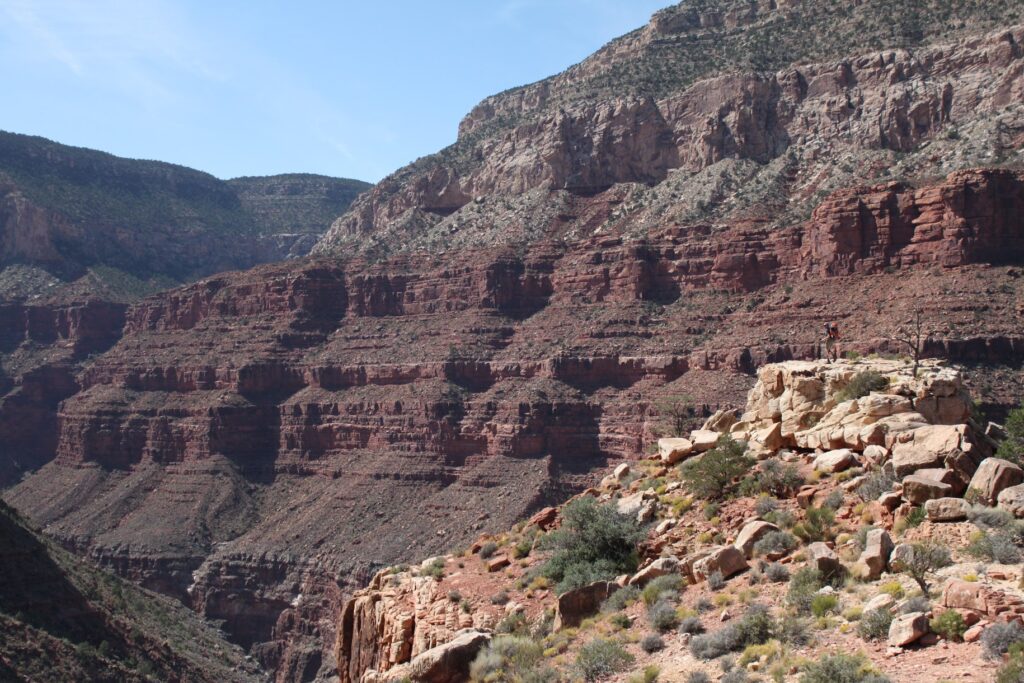
It is much like rescue missions I would expect at my house, nestled in the quiet suburbs. I may be doing something stupid at home (trampolining while drunk while holding scissors) or I may just have a pot of boiling pasta water fall over on me. Either way, it is my expectation, it is our society’s expectation, that help will be available. We count on it.
We call his knee the Bionic Knee and while it occasionally will swell, while his recovery was long and full of trials, he can do what he wants today. Modern medicine allows him to ski, hike, bike, run and be limitless, despite having ripped his knee apart by one misstep in the Canyon.
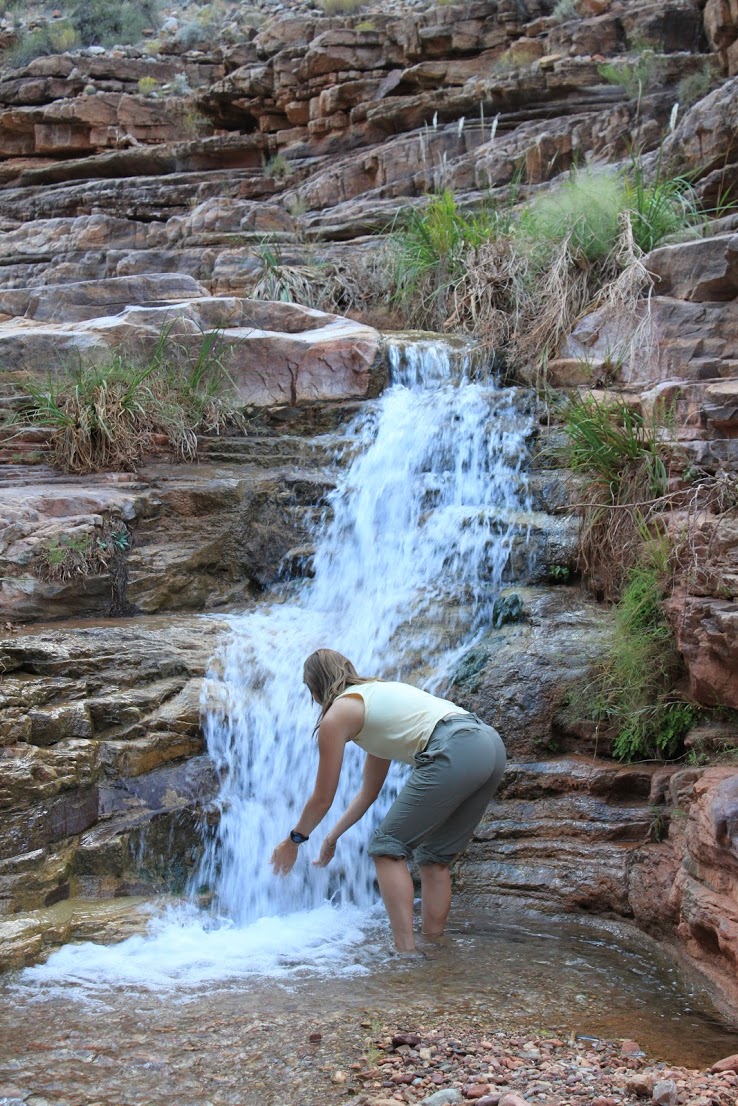
It took me awhile to venture too far away from my spin bike located in the safe confines of the air conditioned gym and retackle the backpacking trail. But on days when the honeysuckle makes me sneeze and my afternoon walk smells like youth and oak trees and sweat I find myself yearning to be back out there, learning what I have left in me, wanting to spin my eulogy more. Somedays I get back onto Google and research the best backpacking trails. Something inside needs the moment to tackle something beyond incendiary Facebook statuses and Microsoft Excel sheets.
I haven’t given up on myself. Maybe someday I will know what the Colorado River looks like in places where it is rarely touched. Maybe I will know the feeling of being so remote, foreign, away, and in a place man is not meant to go by adventuring once again in to the heart of that improbable terrain. Somedays I lick my lips to the taste of salty sweaty and I remember the feeling of euphoria when I walked into camp that first night.
Then I remember how fragile it is, the esri map, and how close we always are to tipping the scales. Right now, deep in the Grand Canyon, someone could be struggling. I close my eyes and I offer them a silent prayer.
Research, Resources and Links about the Grand Canyon & Rescue Operations:
- https://www.nps.gov/grca/planyourvisit/overnight-hiking.htm
- http://fivethirtyeight.com/datalab/dying-at-the-grand-canyon/
- http://www.citylab.com/weather/2015/05/mapping-the-grand-canyons-gruesome-legacy-of-death/394040/
- https://www.backpacker.com/videos-photos/the-6-most-dangerous-national-parks/#bp=0/img1
- http://www.esri.com/products/maps-we-love/death-grand-canyon
- http://www.mnn.com/earth-matters/wilderness-resources/stories/when-hikers-need-help-who-foots-rescue-bill
- https://www.researchgate.net/publication/26795932_Dead_Men_Walking_Search_and_Rescue_in_US_National_Parks
- https://www.nps.gov/grca/learn/management/program-statistics.htm
- http://www.nationalparkstraveler.com/2014/06/search-and-rescue-missions-cost-national-park-service-nearly-4-million-201325282
- https://www.researchgate.net/profile/Travis_Heggie
- http://www.backpacker.com/survival/8-survival-tips-from-a-grand-canyon-rescue-ranger/
- http://tucson.com/news/state-and-regional/clueless-hikers-still-a-puzzle-for-grand-canyon-rangers/article_18616b3f-e138-5394-8f44-08df6aae797d.html
